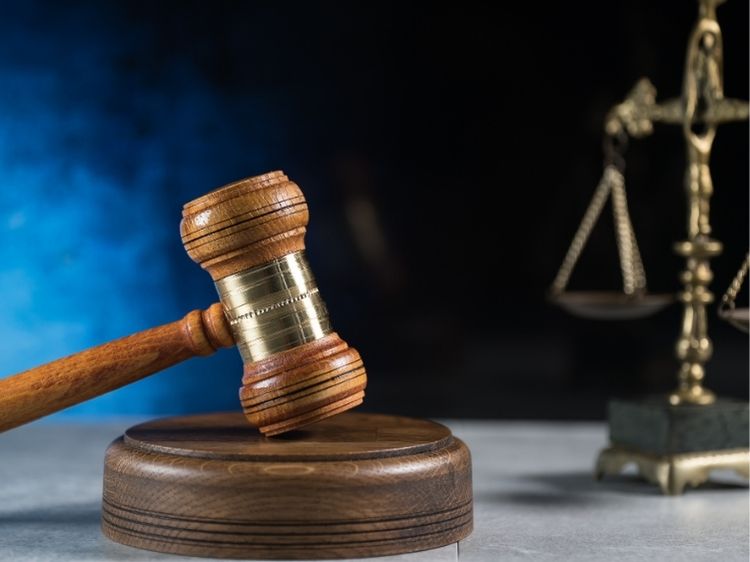Ever bought a product that didn’t quite live up to its promise? Worse yet, has it ever caused harm? If you’ve found yourself in that unfortunate situation, you’re not alone. Product liability court cases have become a vital tool for consumers to hold manufacturers accountable for defective or dangerous products. Whether it’s a malfunctioning car part, a hazardous household item, or a contaminated food product, these cases ensure that companies take responsibility for the safety of their products.
In this article, we’ll break down everything you need to know about product liability, from the types of claims you can make to some of the most notable court cases in history. Let’s dive into the legal landscape and see how the courts decide who’s to blame when things go wrong.
What Is Product Liability?
Product liability refers to the legal responsibility that manufacturers, suppliers, and retailers bear if their products cause harm to consumers. When you purchase a product, there’s an expectation that it is safe for its intended use. If it turns out that the product is faulty or poses danger, the injured party may file a product liability court case against the responsible party.
Product liability cases typically revolve around three main claims:
- Design Defects – The product was inherently dangerous due to its design, even if manufactured correctly.
- Manufacturing Defects – The product’s design may be sound, but an error occurred during production that caused the item to be unsafe.
- Failure to Warn – A product may be safe if used correctly, but if there are no warnings or instructions regarding potential risks, the manufacturer could still be held liable.
Types of Product Liability Claims
There are various ways a company can be held liable in a product liability court case. These include:
- Strict Liability: The most common claim in product liability cases. Under strict liability, the plaintiff doesn’t have to prove negligence, only that the product was defective, and the defect caused injury.
- Negligence: Here, the plaintiff must show that the manufacturer failed to exercise reasonable care in the design, production, or marketing of the product. It’s a tougher case to prove because negligence focuses on the company’s actions, or lack thereof.
- Breach of Warranty: This involves a failure to meet the terms of a product’s guarantee. If a product doesn’t perform as advertised, the company may have breached an express or implied warranty.
Each of these claims plays a crucial role in product liability court cases, depending on the facts of the case.
Notable Product Liability Court Cases
Let’s look at a few high-profile cases that made waves in the world of product liability litigation. These cases serve as cautionary tales for companies and as a warning to consumers about potential dangers.
1. McDonald’s Hot Coffee Case (Liebeck v. McDonald’s Restaurants)
In one of the most famous product liability court cases, Stella Liebeck sued McDonald’s after suffering third-degree burns from a spilled cup of coffee. The jury awarded her nearly $3 million in punitive damages, although the amount was later reduced. This case highlighted the importance of warnings, as the coffee was served at a dangerously high temperature without adequate warnings about the risk.
2. Ford Pinto Case
The Ford Pinto case involved a design defect where the car’s fuel tank was prone to catching fire during rear-end collisions. Internal memos revealed that Ford knew about the defect but decided against a recall due to cost considerations. This resulted in numerous lawsuits and significant financial settlements, forever tarnishing Ford’s reputation.
3. Talcum Powder and Johnson & Johnson
In recent years, Johnson & Johnson faced lawsuits alleging that its talcum powder products were contaminated with asbestos and contributed to ovarian cancer. The courts awarded billions in damages to plaintiffs, setting a precedent for future product liability claims against major corporations.
Key Elements of a Product Liability Court Case
Now, what makes a product liability case successful? Several key elements must be proven in court for the plaintiff to win:
- Injury or Loss – The plaintiff must demonstrate that they suffered actual harm or financial loss due to the product.
- Product Defect – The plaintiff needs to prove that the product was defective. The defect could be in design, manufacturing, or labeling.
- Causation – There must be a clear link between the product defect and the injury or loss. This is where things can get tricky, as defense teams often argue that the plaintiff misused the product or that another factor caused the harm.
- Timely Filing – Product liability cases must be filed within a certain time frame, known as the statute of limitations. Failing to do so can result in the case being dismissed.
How Courts Determine Responsibility
In a product liability court case, the court looks at several factors to determine who should be held responsible. It’s not always black and white. Sometimes multiple parties are found liable. For instance:
- The Manufacturer: Most commonly held responsible, especially for design or manufacturing defects.
- Retailers: They can be held liable if they sold a defective product or failed to warn consumers of potential dangers.
- Distributors: If a defect occurred in the distribution chain, the distributor may also be found responsible.
The Role of Experts in Product Liability Cases
Expert witnesses often play a vital role in product liability court cases. They can testify about industry standards, the science behind product design, or how a defect could lead to injury. For example, in medical device cases, doctors or engineers may be called to explain how a product malfunctioned or why it posed a significant risk to users.
How to Avoid Product Liability
For manufacturers, avoiding liability requires several proactive steps:
- Rigorous Testing: Before products hit the shelves, they should undergo extensive testing to ensure they meet safety standards.
- Clear Warnings: Even the safest products can be dangerous when misused. It’s essential to include adequate warnings and instructions.
- Continuous Quality Control: Manufacturers must maintain strict quality control processes throughout the production line to catch defects early.
- Recalls: If a product is found to be defective after being sold, issuing a recall can prevent further injuries and reduce the risk of lawsuits.
FAQs About Product Liability Court Cases
- What should I do if I’m injured by a defective product? If you’re injured by a product, seek medical attention immediately. Preserve the product and any receipts, packaging, or warranties. It’s wise to consult a lawyer who specializes in product liability to explore your options.
- Who can be held liable in a product liability case? Manufacturers, retailers, distributors, and any party involved in the supply chain can be held liable if their actions contributed to the defect or failure to warn.
- How long do I have to file a product liability lawsuit? The time frame varies by state and the nature of the case. Generally, you should file within 1-6 years after the injury occurs.
- Do all product liability cases go to trial? No, many are settled out of court. However, if a settlement can’t be reached, the case may proceed to trial.
Conclusion
Product liability court cases are a crucial aspect of consumer protection, ensuring that individuals harmed by defective products can seek justice. Whether it’s a faulty appliance or contaminated food, holding manufacturers accountable is necessary for public safety and trust in the marketplace.
By understanding how these cases work, both consumers and businesses can navigate the legal system more effectively. For consumers, it’s a path to compensation, while for businesses, it’s a reminder to prioritize safety over shortcuts.
Authoritative Links:
- https://www.nolo.com/legal-encyclopedia/product-liability-claims-defective-products-30009.html
- https://www.consumerreports.org/cro/news/2015/12/product-liability-law/index.htm
- https://injury.findlaw.com/product-liability




